As spring casts its rousing warmth across the country, get ready for your wildlife sightings to soar.
European roe deer (Capreolus capreolus)
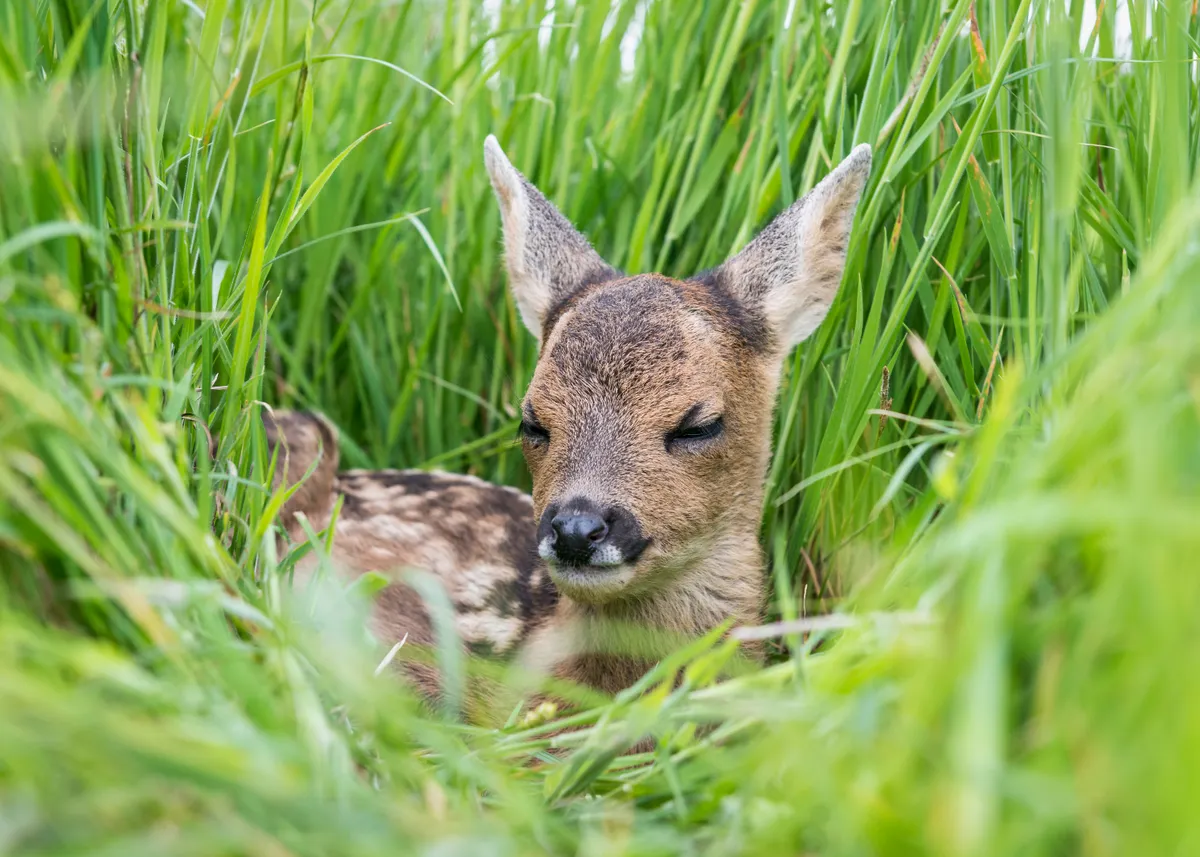
Ridiculously cute roe deer kids are born in May and June, often hidden in long grass or bracken, where their spotty coats provide camouflage. Twins are the norm, unlike in Britain’s larger deer, and the young now taking their first wobbly steps are the result of matings last summer. In the 1923 book of the same name, Bambi was a roe deer, not a fallow deer as many people assume.
The scientific name of the European roe deer, Capreolus capreolus, is an example of a tautonym, where the genus and specific name are the same.
Elephant hawkmoth (Deilephila elpenor)

It is May, and that means hawkmoth season is here again. Hawkmoths are huge and lovely, ensuring they are the most celebrated of all moth families. These are the moths everyone wants to see. In both size and range of colours, they outclass most British butterflies.
But perhaps the comparison is bogus, because, scientifically speaking, there is no clear-cut difference between butterflies and moths, just as toads are technically frogs. James Lowen, author of Much Ado About Mothing, puts it like this: “Butterflies are simply moths with good PR”.
With its beautiful pink-and-green livery, the elephant hawkmoth is one of the showiest members of a family known for its
show-offs. It flies after dark from May to July in much of the UK, including in suburbia. From July to September, gardeners find its snake-like caterpillars – that look a little like an elephant’s trunk – crawling over flowerbeds or patios in search of somewhere to pupate. To deter predators, the caterpillars have two black eyespots on their backs.
Western cattle egret (Bubulcus ibis)
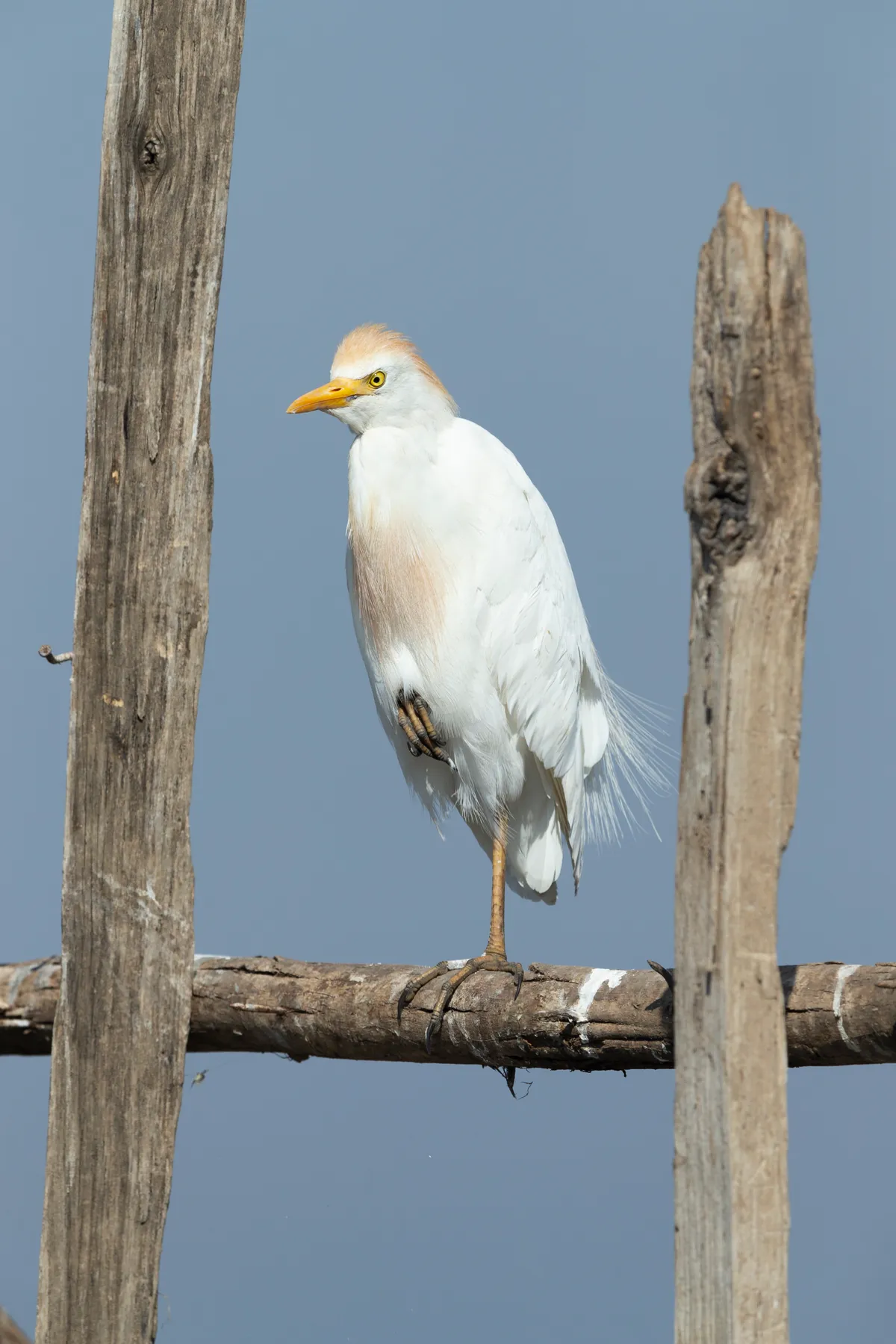
The cattle egret is a little white heron with global ambitions. It is familiar throughout the tropics and spreading in temperate regions – the species ranges over more of the world than any other land bird, with the possible exception of the barn owl. It has even turned up on the remote South Orkney Islands, which – as the egret flies – are not that far from Antarctica. And now the cattle egret appears to be colonising England.
Cattle egrets have bred, or attempted to, in several English counties, often near the nests of little egrets or grey herons. For now, the breeding population is tiny, but birders hope to see more displaying birds this May and June.
Cattle egrets look their best in breeding season, with long ‘nuptial plumes’ on their heads and backs and peachy tones in their snowy plumage. As their name suggests, they frequent herds of cows, feeding on insects and worms disturbed by the cattle.
Hairy dragonfly (Brachytron pratense)

May sees the first dragonflies patrolling weedy ditches and pools. They’re usually hairy dragonflies, which fly early in the year and are the smallest hawker dragonflies in the UK. To tell them apart from other species, you’ll need a clear view of a perched dragonfly to make out the hirsute thorax (it’s hard to see when it’s flying). Hairy dragonflies are found mostly in the south – the Somerset Levels and Norfolk Broads are hotspots.
No-mow roads

There is a growing interest in the value of our road network for nature, which may sound a contradiction in terms. But for a few heady months in spring and early summer, road verges burst into bloom. At least, properly managed ones do. Their potential is obvious. Verge-loving wildflowers out in May include cow parsley, red campion, bird’s-foot trefoil, meadow buttercup, cowslip and clover. Then there are the wild grasses, on which many moth and butterfly caterpillars feed.
A recent study at the University of Exeter estimated that road verges in England, Wales and Scotland represent just over 2,500km2
of grassland habitat. Plantlife, meanwhile, says that verges contain 80 per cent more grassland than the open countryside, most of which is farmed (much of it intensively).
The statistics are impressive – and councils are at last starting to take notice, with more developing wildflower-friendly late-mowing regimes, cutting only the kerbside portion before September. Picking up the cuttings is also key – leaving them boosts soil fertility so that vigorous species proliferate, swamping others.
Common redstart (Phoenicurus phoenicurus)

May is an excellent time to seek out redstarts, among the most beautiful of our summer migrants. They are mainly birds of old oak woods, especially in the north and west, but can also be seen in hill country with scattered trees.
On upland farms, they often feed along dry-stone walls, dropping to the ground to catch flies on sheep dung. In his book English Pastoral, the farmer-author James Rebanks delights in their “little red tails... flitting along by the sheep from one thorn tree to the next. Their tails flash with each wing beat, little triangular wedges of freshly cut mahogany.”
This is the feature for which the birds are named, ‘start’ being derived from the Old English for ‘tail’. However, while male redstarts look smart, their song sadly isn’t. It is a simple warble that ends in a flourish – like a chaffinch to some ears, but less tuneful.
The scientific name of the common redstart, Phoenicurus phoenicurus, is an example of a tautonym, where the genus and specific name are the same.
Lime hawk-moth (Mimas tiliae)
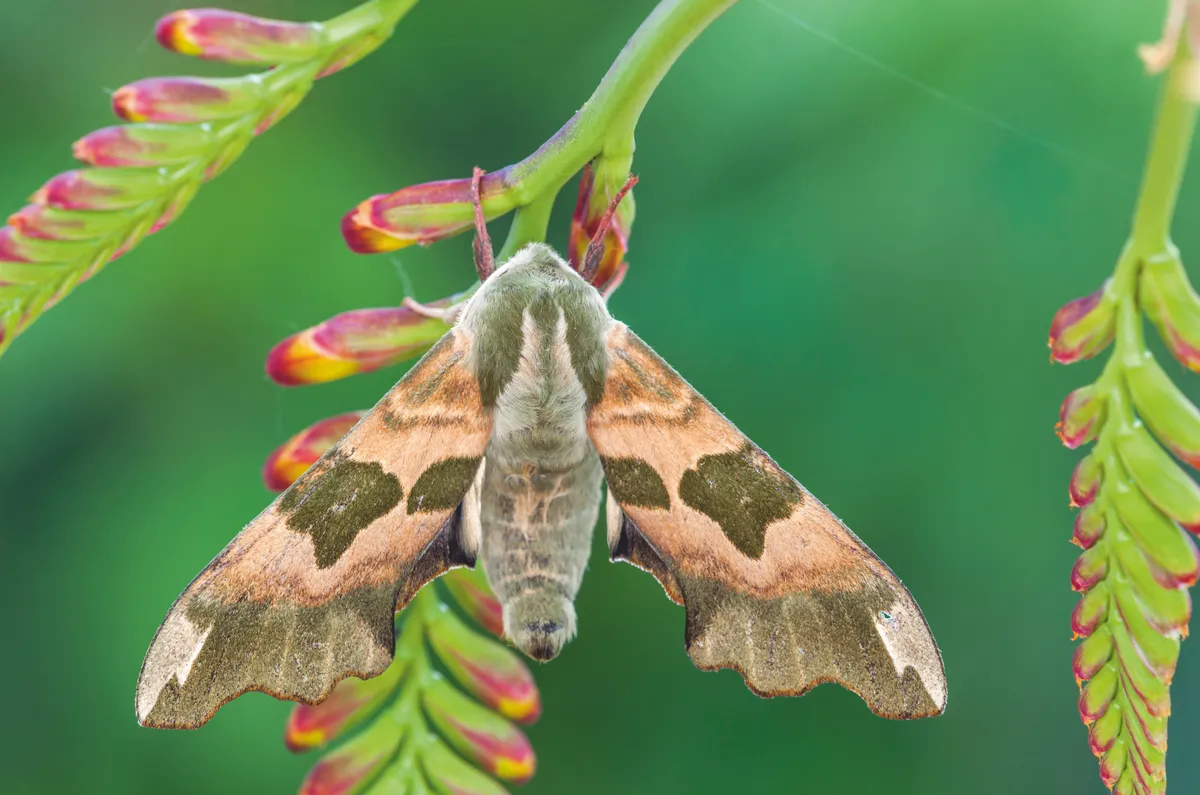
A real dandy, one of our best-looking moths, the lime hawk-moth launches on warm May evenings. Its distinctive scalloped wings and bold pattern that ranges from green to chestnut are quite a statement, but also make it harder to spot when resting among dappled leaves or against tree trunks during the day.
Our love of avenues of limes and other trees along our streets brings the lime hawk-moth to the heart of urban areas, and it is common in parks and gardens.
It is not the lime’s fragrant flowers that attract it – this moth doesn’t feed at all as an adult – but its heart-shaped leaves, on which the females lay their eggs. In the absence of lime, the moths will also use elm or London plane – an ornamental tree, particularly widespread in the capital.
After some weeks feasting in the canopy, their large, stripy, yellow-and-green offspring, which are topped off with a blue ‘tail horn’, descend to the ground. The caterpillars can often be spotted on pavements or among vegetation in late summer, as they seek a safe place to pupate. Once they have found a suitable spot in soil or leaf litter they will remain there until May, when they are ready to rise again.
Eurasian woodcock (Scolopax rusticola)
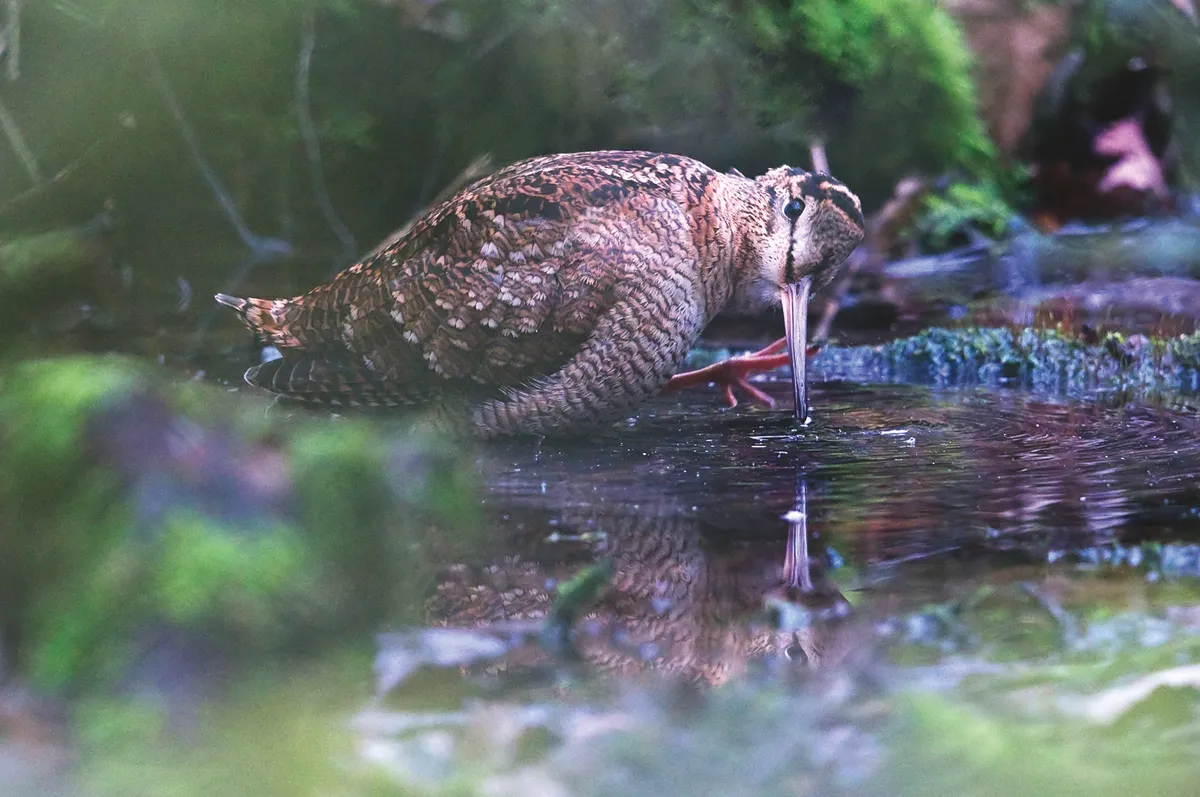
The “long unwieldy bill of the woodcock” remarked upon by 18th-century naturalist Gilbert White, is in fact the perfect asset for this dumpy wader as it probes woodland soils for invertebrates.
Their beautiful mottled feathers make woodcock notoriously difficult to spot, but this month males drop the subterfuge and take to the sky on their bizarre ‘roding’ courtship flights.
Purposefully patrolling their territory at dusk, a combination of squeaks and grunts adds to their display. Woodcock are present year-round but numbers swell to an estimated 1.5 million every winter, as Russian, Baltic and Scandinavian expats seek a milder climate.
Cow parsley (Anthriscus sylvestris)
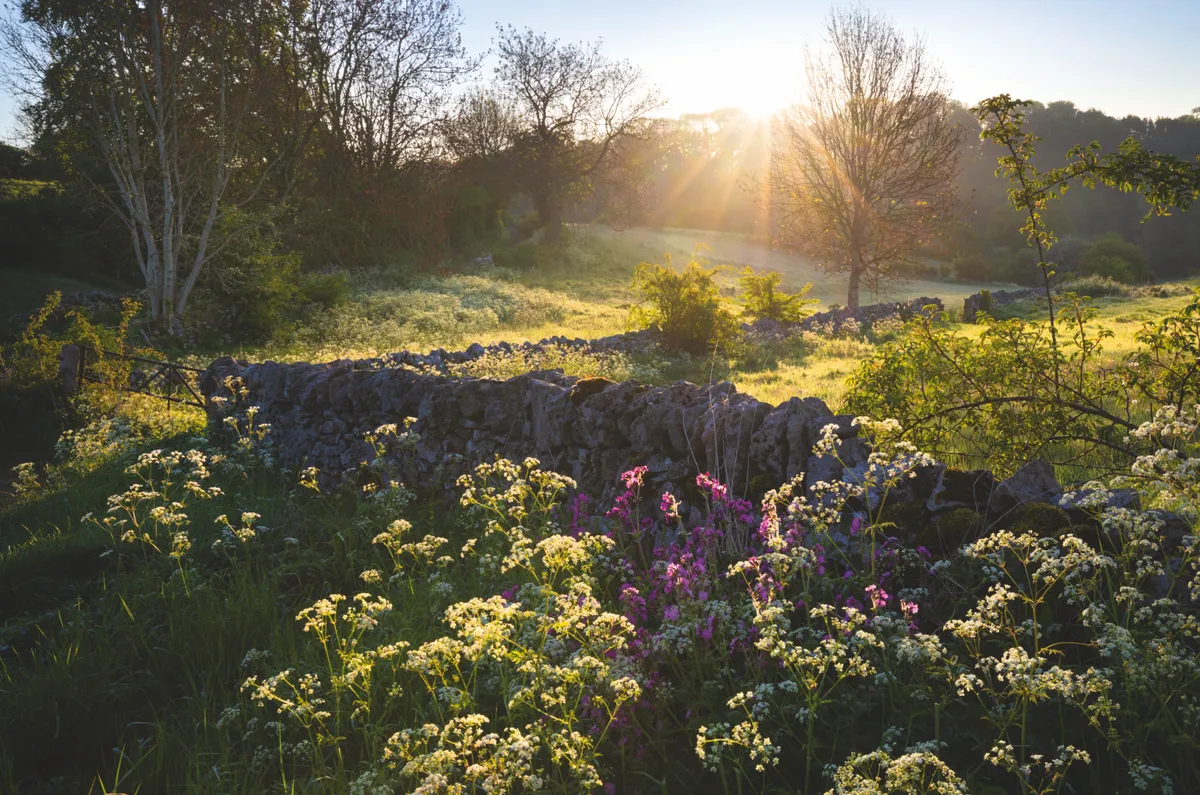
Cow parsley fills the verges of country lanes with ‘white froth’ during May. It is one of the earliest to bloom in a sequence of similar-looking wildflowers in the carrot family, characterised by clusters of delicate flowers, reminiscent of an umbrella (giving them their alternative name of umbellifers). Their open flowers are a magnet for insects, including hoverflies and bees.
Cow parsley is fast-growing and abundant on fertile verges. Earlier this year, Plantlife released its Good Verge Guide full of management tips to ensure vigorous plants, such as cow parsley, share our roadsides with some of the other 700 wildflower species recorded along verges.
Hazel dormouse (Muscardinus avellanarius)

After hibernating the coldest months away, hazel dormice are finally awake and active. They spent the winter not in a teapot (as Lewis Carroll would have us believe), but alone in a neatly woven nest, secreted away in dense scrub or leaf litter.
We often picture dormice as dozy, but they are remarkably agile mammals, foraging across the canopy and understory. During late spring and summer, flowers are important for nutrition, with favourites including bramble, hawthorn and honeysuckle.
It is autumn when dormice turn their attention to their namesake hazel and other high calorie foods to pile on the grams once again for their winter snooze.
Ring ouzel (Turdus torquatus)

These beautiful mountain blackbirds, a speciality of northern England and Wales are returning to their territories. On reaching our shores from their Atlas Mountains wintering grounds, some ouzels continue on for Scandinavia, whilst our local breeders head for the steep and rocky uplands.
A glimpse of the male, with the distinctive white crescent on his breast gleaming, is breath- taking. Nick Baker writes of the magic of encountering one of these “spirits of the uplands” in Red Sixty Seven. Though secretive, you may be lucky enough to catch their repeated, wistful notes drifting over moorland and hillsides.
Learn more about ring ouzels and other migrating birds:
Groundsel (Senecio vulgaris)
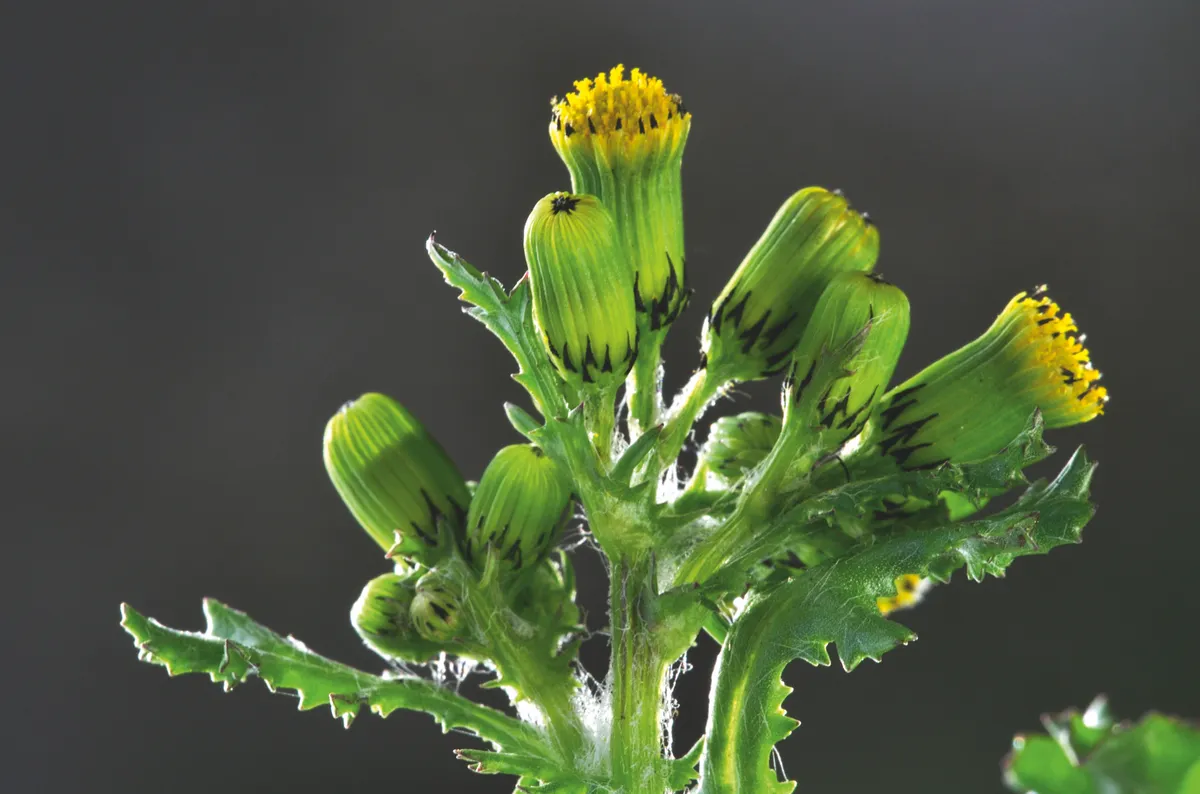
An annual plant that thrives in disturbed ground, groundsel is popular with butterflies and other insects and is just one of a number of yellow-flowered daisies.
Once pollinated, groundsel produces feathery heads of more than 1,000 seeds. Those seeds not eaten by birds make the most of opportunities such as gaps in pavements but it is this adaptability that leaves the species in danger of being underappreciated.
The More Than Weeds project is paving the way, helping people to notice plants like groundsel and its fellow urban ‘weeds’ that splash a bit of colour onto our grey streets.
Cockchafer (Melolontha melolontha or Melolontha hippocastani)

The large and spectacular cockchafer, a type of scarab, tumbles into night skies this month. Their burrowing larvae mature over several years, feeding on roots, so cockchafer numbers fluctuate but some years culminate in chaotic mass emergences.
These rotund beetles spiral their way through a short (five-to-seven weeks) adulthood with an audible buzz. Face-to-face with a cockchafer, you’ll notice the fan-shaped antennae (known as ‘pectinate’). These superb structures are filled with sensors thought to help them find food and a mate.
The scientific name of the common cockchafer, Melolontha melolontha, is an example of a tautonym, where the genus and specific name are the same.
Large white butterfly (Pieris brassicae)
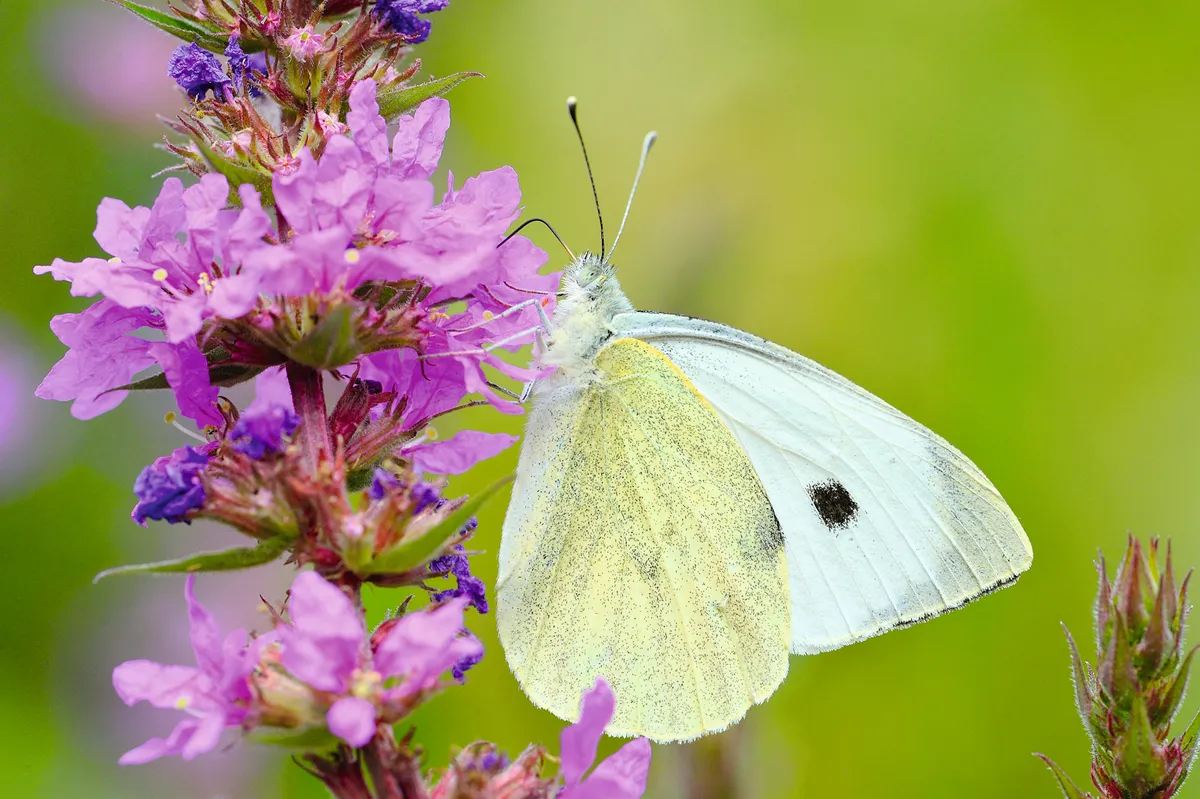
April and May 2020 were the UK’s sunniest on record, leading to nearly all our butterflies emerging early. Was this a one-off, or part of a trend? Butterfly enthusiasts are eager to find out.
One species that broke records in 2020 was the large, or ‘cabbage’, white. It has two broods: the first traditionally on the wing in April and May, the other in midsummer.
New research has shown that big, pale butterflies are better at protecting themselves from high temperatures, by using their wings as solar shields to reflect heat.
Blackcap (Sylvia atricapilla)

Spring’s dawn chorus is not to be missed – the volume and variety of birds singing is so intense and uplifting. Simon Barnes, in his book Rewild Yourself, reckons it is the “single biggest wildlife miracle that we have in Britain”.
Aim to be in place by 5am – a woodland or park is ideal, but every habitat has a dawn chorus. Among the multitude of robins, wrens, thrushes and tits, one abundant warbler you are almost bound to hear is the blackcap, whose song is so sweet and sustained that it is often mistaken for a nightingale.
Learn more about blackcaps and the dawn chorus:
Brook lamprey (Lampetra planeri)
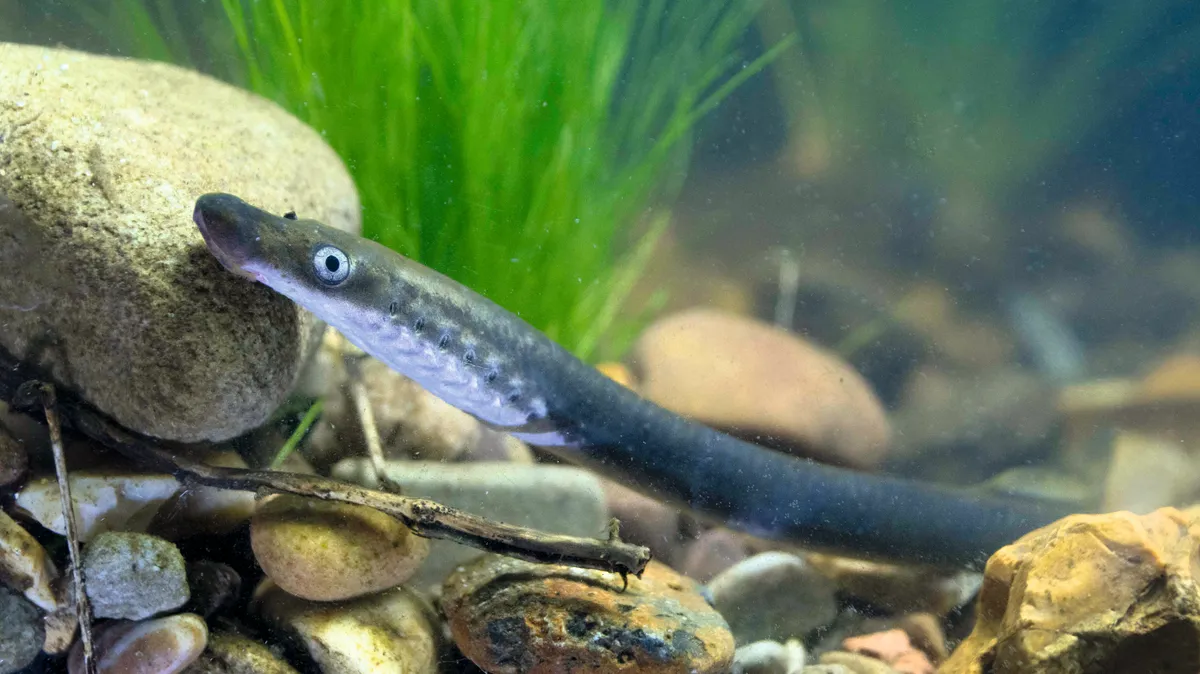
In his memoir A Curious Boy, palaeontologist Richard Fortey calls the brook lamprey “a fugitive from deep time”. It’s an apt description, because this weird and wonderful creature is one of the most primitive types of vertebrate alive today.
The proto-fish is silvery and eel-like, with a body slightly thicker than a human index finger, though its strange, sucker-like mouth is hard to see in the wild. Look for its sinuous form in clear, gravelly streams or ditches. In spring, groups of adults can sometimes be seen spawning in writhing groups.
Nightingale (Luscinia megarhynchos)

When the human world is in turmoil, we can all take comfort in the beyond-human one. Birdsong is proven to give us a natural high, and one song in particular has been written about by almost every nature writer: that of the male nightingale. Shy and dowdy he may be, but when he opens that beak, he has the power and clarity of an opera singer, and the improvisation and range of a jazz diva.
Though legendary for singing on May nights, this relative of the robin also performs in early morning and at dusk. The fact that it skulks in the shadows only adds to the sense of occasion. New undergrowth and scrub are what the species needs, ideally less than 10 years old. Sadly, heavy browsing by deer and a decline in traditional woodland management have sent numbers into freefall.
There’s also evidence from Spain that, due to drought, some nightingales there are evolving shorter wings, leading to fewer surviving the migration to and from Africa. It’s not yet known if this affects the UK population.
But as Luke Massey puts it in Red Sixty Seven, a book celebrating our 67 most vulnerable birds, “Will we really let this be the last song of the nightingale?”
Red-tailed bumblebee (Bombus lapidarius)
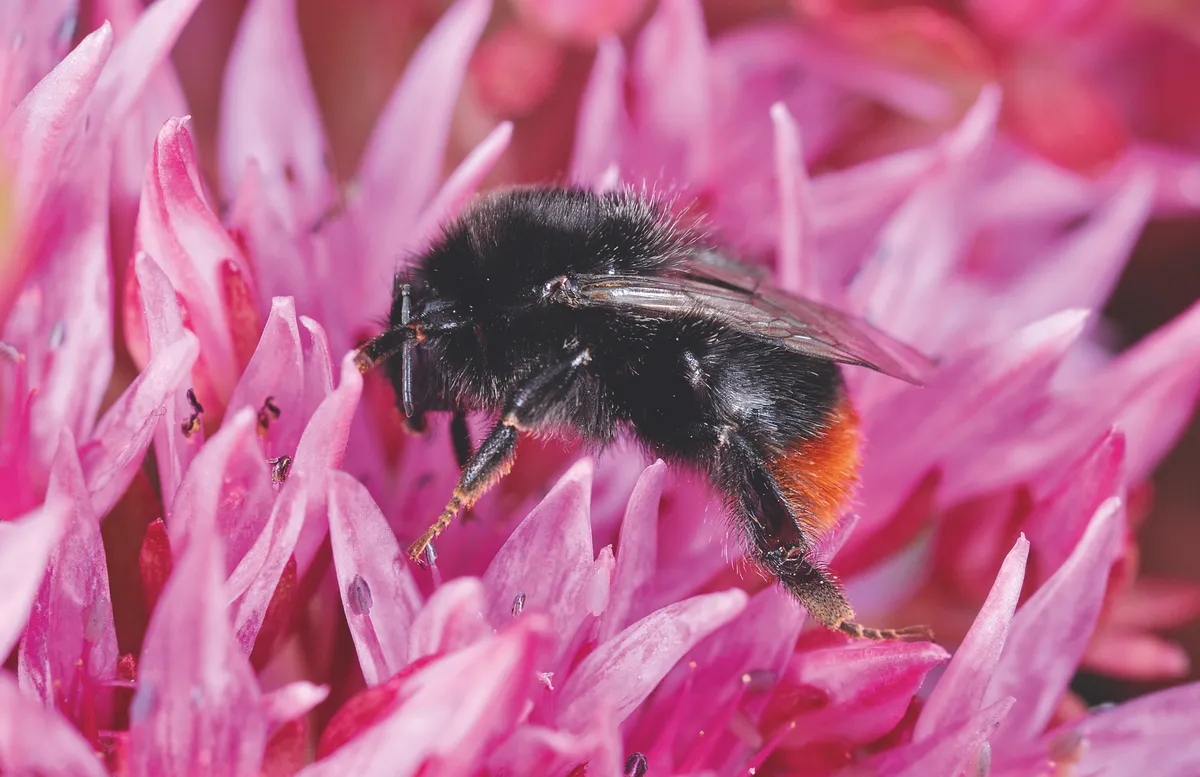
Two hundred years ago this month, HMS Beagle was launched. Later, the ship would famously take Charles Darwin to see exotic flora and fauna in South America, though it’s often forgotten he spent far longer watching everyday wildlife closer to home.
In Kent, the naturalist observed “humble bees” in forensic detail, becoming one of the first to notice that they patrol the same linear foraging routes over and over. Probably our most distinctive widespread species is the red-tailed, which loves clover, dandelion, daisy and thistle flowers.
Learn more about bees:
Orca (Orcinus orca)
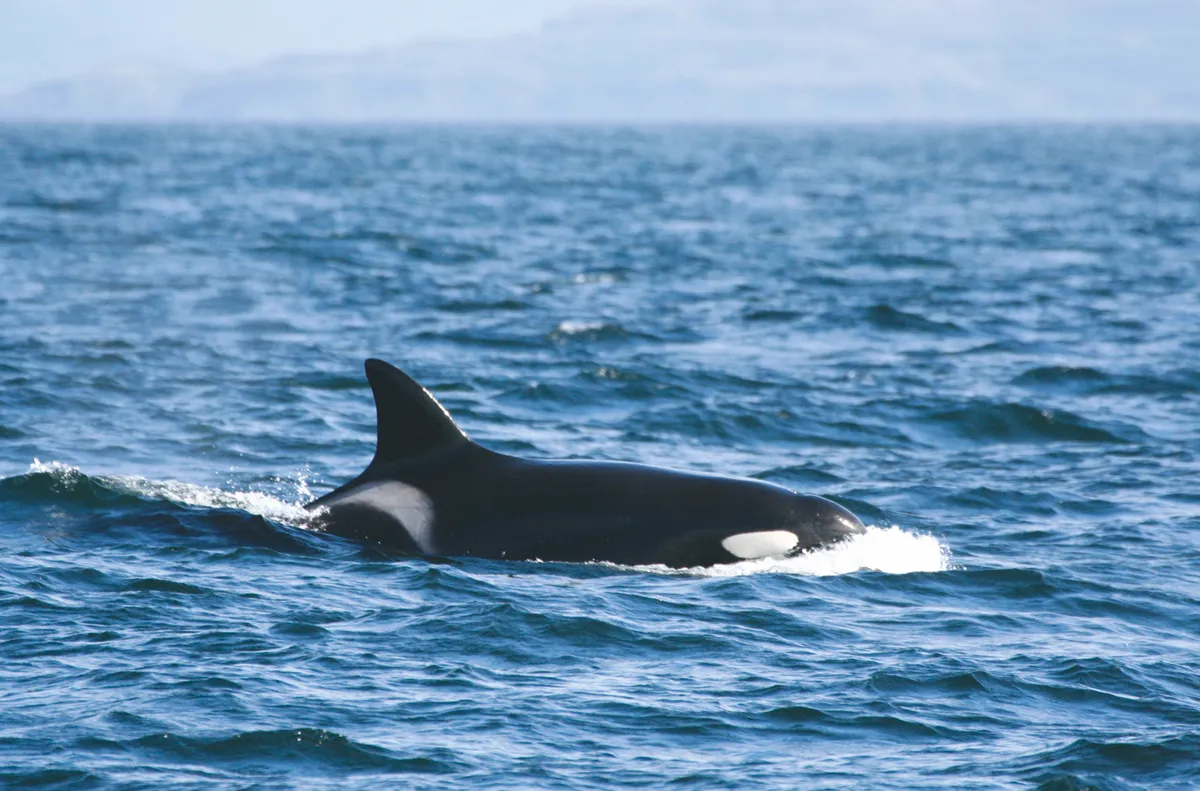
Due to COVID-19, this is the first year since 2012 that volunteers won’t gather on clifftops in Caithness, Orkney and Shetland. Usually in May they scan the sea for cetaceans – especially orcas, small numbers of which visit these waters from Iceland and Norway during the summer months.
The huge predators come to hunt grey and harbour seals (the latter have pups in midsummer, so are particularly vulnerable) and sometimes venture amazingly close to shore. Each individual orca can be recognised by the pale patch, or ‘saddle’, behind its dorsal fin, which may itself bear telltale nicks or scars.
Holly blue (Celastrina argiolus)

If you’re lucky, you might in a village spot a common blue, but realistically this is the only ‘blue’ likely to be encountered in the average British garden. Chris Packham called it the “daintiest darling” in his book Back Garden Nature Reserve (still in print after 19 years).
The holly blue is among the first of the year’s butterflies not to have hibernated as adults – ones on the wing now overwintered as chrysalises, which formed last autumn. Numbers peak in May, and there’s a second brood in July to August.
Learn more about UK butterflies:
Hemlock water dropwort (Oenanthe crocata)
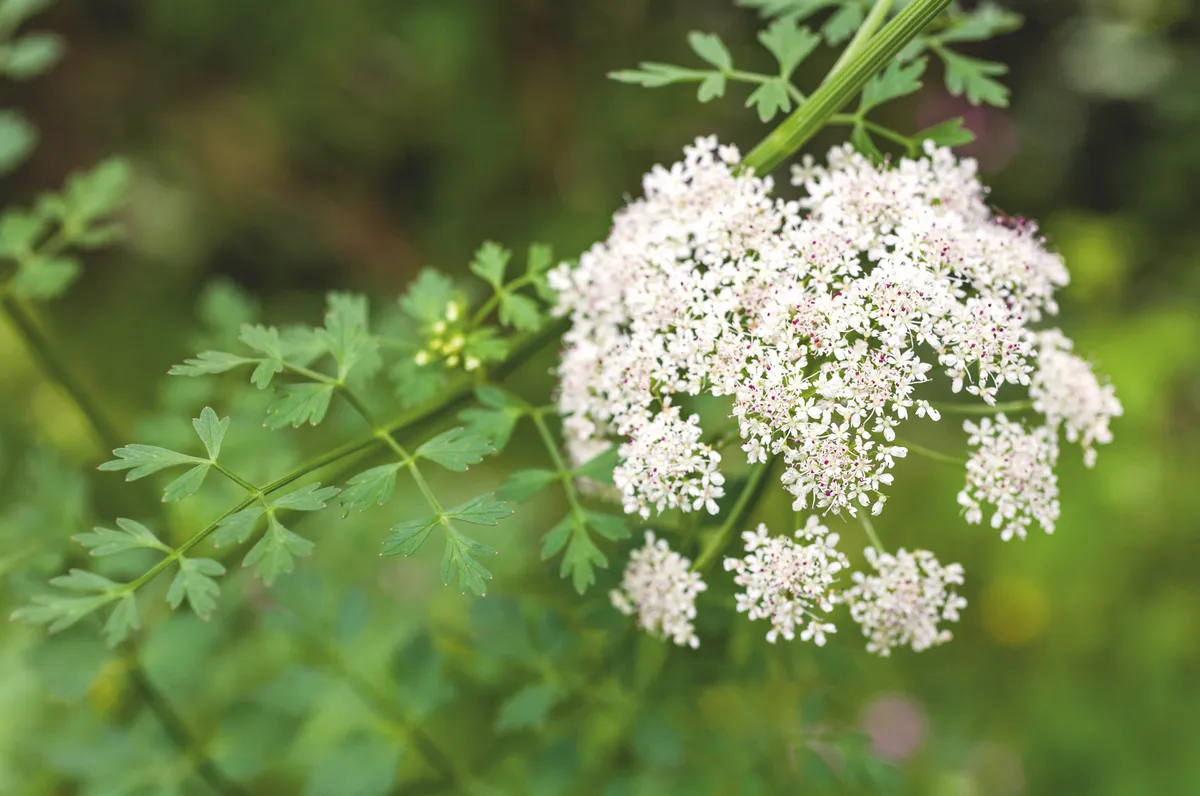
This isn’t the plant with which the Greek philosopher Socrates is said to have killed himself, but it is likewise extremely poisonous. Superficially resembling cow parsley, it produces neat clusters of white flowers in summer and has lacy leaves rather like giant coriander or flat parsley. The grooved stems might remind you of celery.
Hemlock water dropwort loves to have wet feet, growing along ditches and beside muddy streams and rivers. Perhaps alarmingly, it is also abundant – but best left alone.
Kittiwake (Rissa tridactyla)
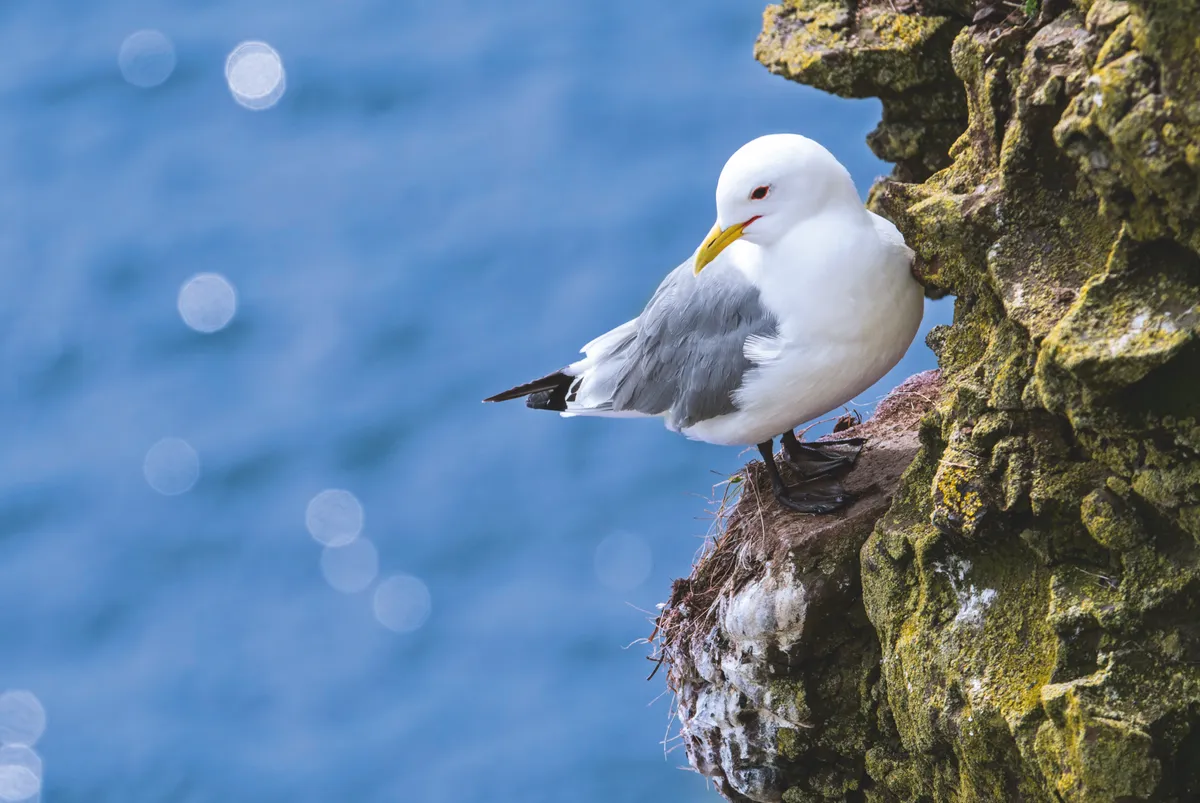
Together with the chiffchaff and cuckoo, jackdaw and curlew, the kittiwake is a bird that calls its own name. In truth, the endlessly repeated cry sounds more like ‘kitti-waaaake’, but nevertheless is impossible to escape at many crowded seabird nesting cliffs, especially in the north and west of the UK.
Unlike other British gulls, this is a truly pelagic species that only frequents coasts during the breeding season. You won’t find it inland, except for one remarkable urban colony on the buildings and bridges of Newcastle and Gateshead.
Roach (Rutilus rutilus)
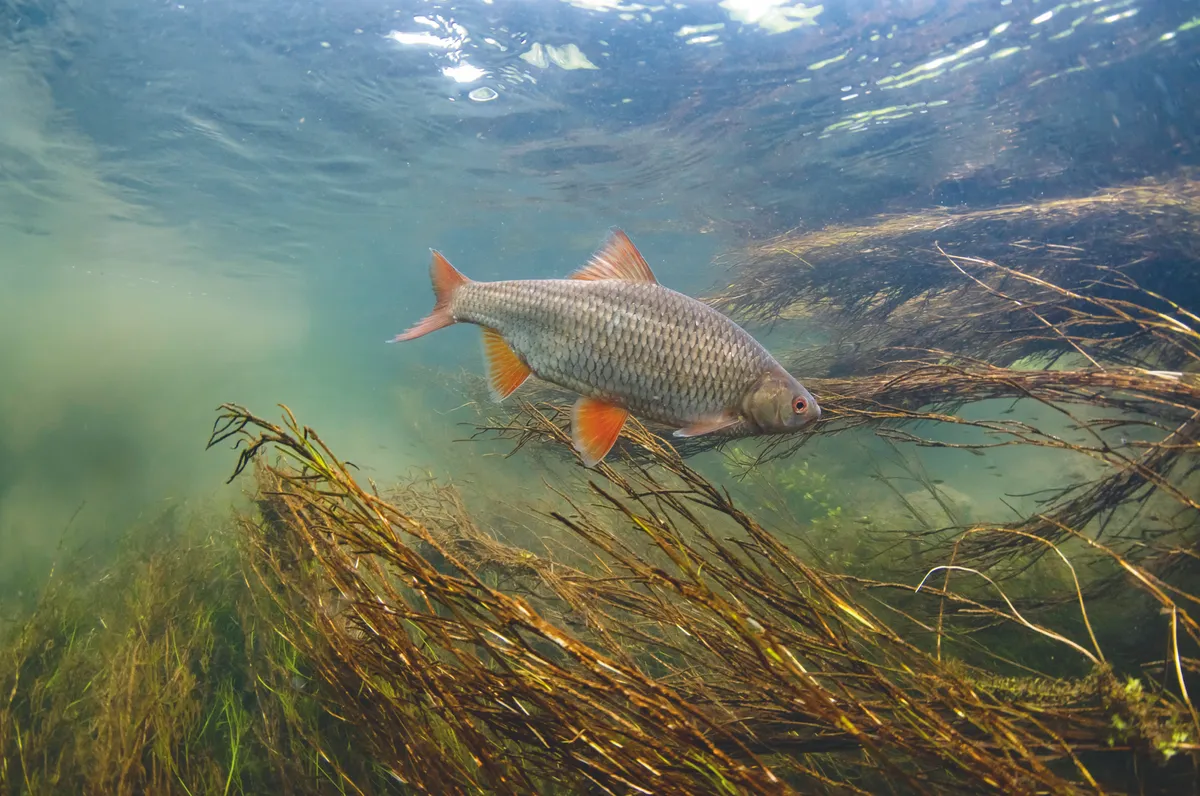
With 12 native species as well as several introduced ones, the carp and minnow family is Britain’s biggest group of freshwater fish. One of their quirks (though you need to be an angler to see it) is a lack of teeth. Many of these fish breed in warm weather this month and next, so briefly become much more noticeable.
Roach spawn in shoals around reeds or other vegetation, thrashing about as males chase females. They have a chunky silver body with bright red fins.
Emperor moth (Saturnia pavonia)

Flame shoulder, sallow kitten, powdered quaker… May’s moths write a special kind of poetry with their names. In looks, though, few can hold a candle to the emperor, Britain’s only representative of the silk moth family, Saturniidae, which in the tropics includes bird-sized giants.
The wings of this large, spring beauty sport two pairs of ‘eye spots’ reminiscent of the roundels on old RAF aircraft. Perhaps, like those of the peacock butterfly, they startle or intimidate predators. When a male moth opens its hind wings, there is also a startling flash of bright orange.
Emperor moths are widespread and not especially scarce but, to glimpse one, your best bet is to stroll across a heath, moor or another sandy, scrubby habitat in fine spring sunshine. Male emperors fly by day – and strongly, too – so, at first, you might think you’ve spotted a butterfly. By contrast, the ‘empresses’ emerge after dark. Neither sex has mouthparts, meaning their time in this world is limited – they meet, mate, then die.
Moths are fascinating and interest in them is growing. Later this year, Butterfly Conservation publishes the first atlas of moths in Britain and Ireland, based on over 25 million records submitted by enthusiasts.
European hedgehog (Erinaceus europaeus)
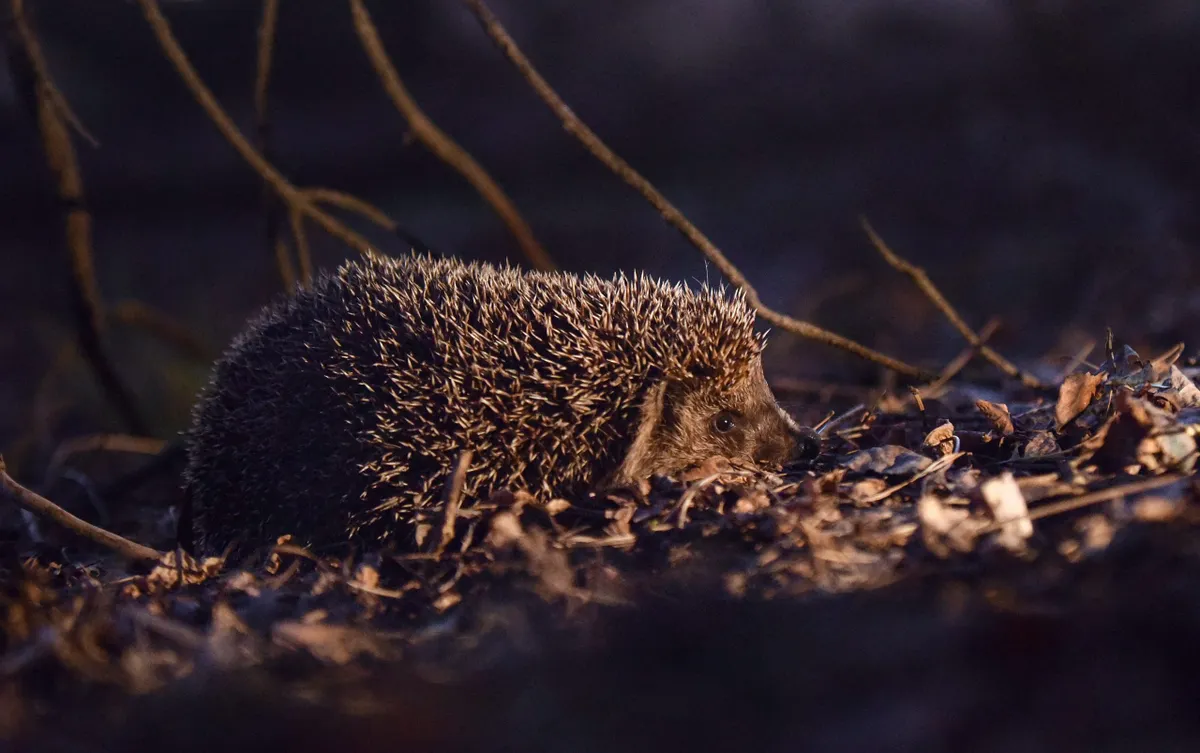
Aristotle thought that hedgehogs mated belly to belly, with the female standing upright. It was a reasonable assumption, given the insectivores’ upper body is covered in around 5,000 spines (and, to be fair, Aristotle correctly recognised these as a form of hair).
In fact, the old joke about hedgehogs mating carefully is fairly accurate. It is preceded by long bouts of huffing and grunting, and a nose-to-tail chase that hedgehog expert Pat Morris describes as “singularly lacking in apparent affection”. Lucky garden owners can hear the performance on warm evenings from May onwards.
Yellow iris / flag iris (Iris pseudacorus)

Iris was the Ancient Greek goddess of the rainbow, tasked with carrying messages for the other gods. Though the Balkans are rich in irises, only two are native to the British Isles, of which the glorious yellow flag is the most abundant by far.
From May to August, its flowers glow in ponds, canals and anywhere marshy, the length and breadth of the country. Dense iris beds offer valuable shelter in the shallows to species such as moorhens and water voles, help control floods and act as a giant filter, improving water quality.
Learn more about pond wildlife:
European turtle dove (Streptopelia turtur)
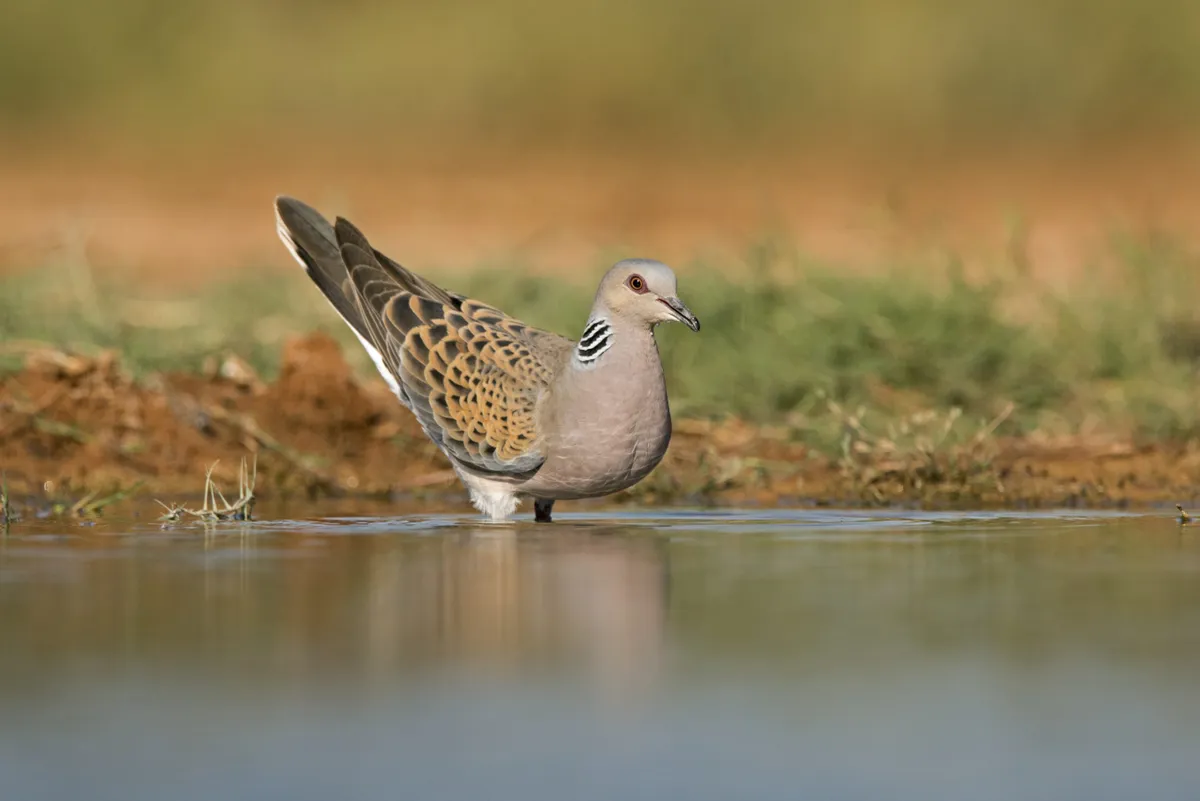
The gentle, ventriloquial ‘turr turr’ of a turtle dove, coming from deep inside a hawthorn tree or hedgerow, was until recently a classic sound of the countryside. Sadly, within a human generation, this summer migrant has almost disappeared from Britain, due largely to hunting in the Mediterranean and the loss of weedy fields.
Today, the turtle dove just about retains a toehold in south-east England and East Anglia. Its hypnotic call features in a new track of birdsong, Let Nature Sing, that celebrates nature’s dawn chorus choir.
Yellow dung fly (Scathophaga stercoraria)
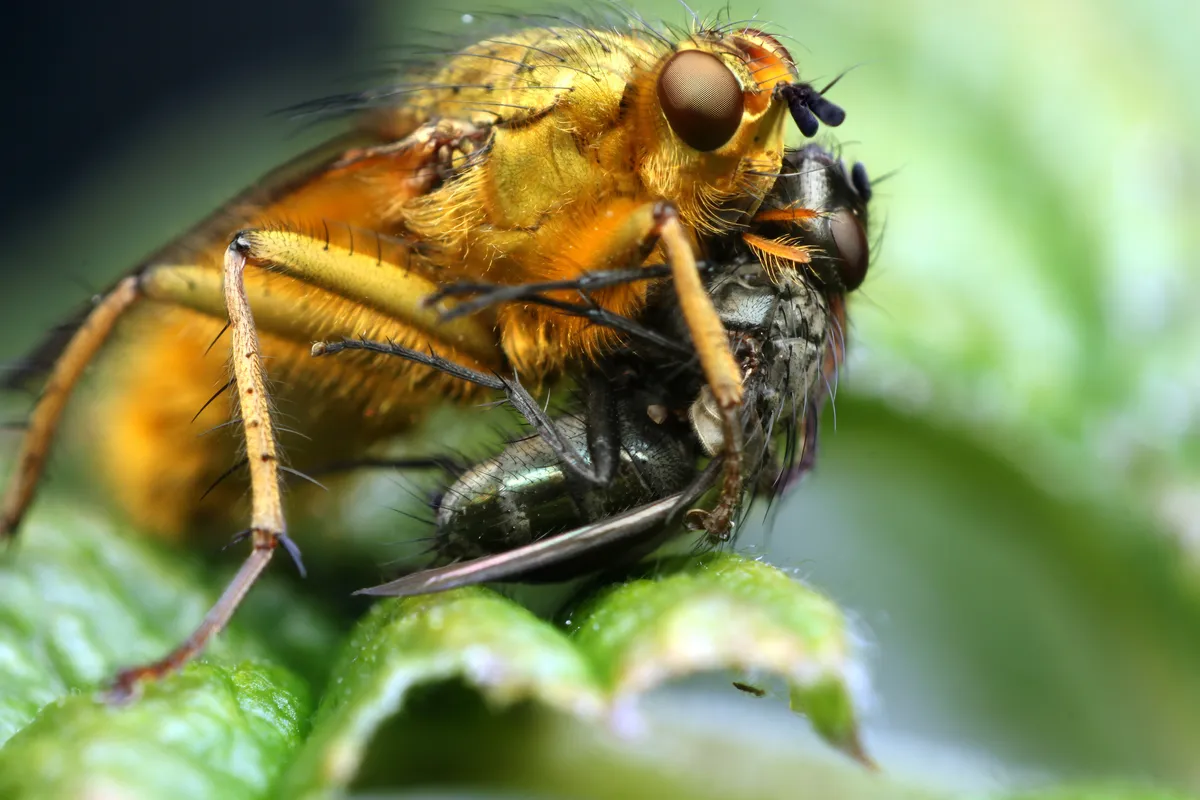
With about 7,000 species in the UK, in every conceivable habitat, we are spoilt for choice when it comes to Diptera (the order’s name means ‘two wings’). To see this handsome example, simply head to a nice, fresh cowpat: you won’t have to wait long.
Virtually the entire insect is the colour of English mustard, except for its eyes and wings, which are chestnut-brown. The adults are fierce predators – just look at those mantis-like front legs – but the larvae munch dung.
Sedge warbler (Acrocephalus schoenobaenus)

Now’s the best time to set your alarm and get outdoors to appreciate the dawn chorus – by 6.30am, it has peaked already and is dying down. One of the jazziest performers is this streak-backed little bird, which sings its scratchy, chattering song from reeds and bushes, often in quite small wetlands beside rivers or canals.
Some say a male sedge warbler never sings the same song twice. He has “endless capacity for variation”, writes Simon Barnes in his book On the Marsh, “as if…the whole spring was one song.”
Jelly ear (Auricularis auricula-judae)
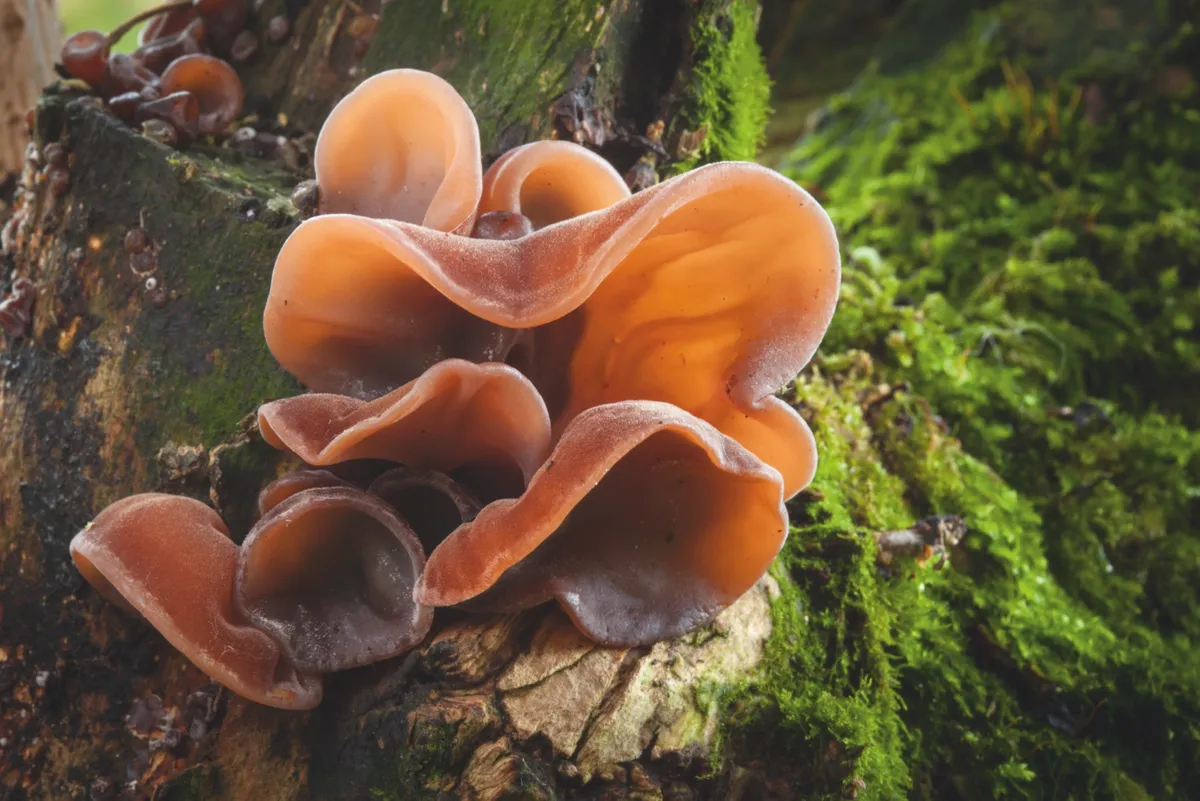
Some fungi produce fruiting bodies year-round, and jelly ear is one. It grows weird, rubbery mounds on elder bushes and is most visible in winter and spring, being tough enough to survive frosts. The squidgy structures have an unsettling resemblance to wrinkly old human ears.
Jelly ear is proof that, while we associate fungi with autumn, hyphae never stop. Hyphae are the mass of tangled fungal threads spreading unseen through wood, plant matter and earth in unimaginably vast numbers, harvesting nutrients for the parent organism.
Pygmy shrew (Sorex minutus)

This is easily the dinkiest British land mammal, usually no heavier than 6g. Close up, its long snout recalls a tiny tapir, albeit one with twitching whiskers and pinprick eyes. But the pygmy shrew is seldom glimpsed alive, as it spends spring and summer deep in the forest of grass stalks.
A hyperactive lifestyle burns the calories, yet the shrew has little in reserve, so must hunt more or less nonstop, consuming one-and-a-quarter times its body weight in insects and spiders every day.
Learn more about shrews:
Golden plover (Pluvialis apricaria)
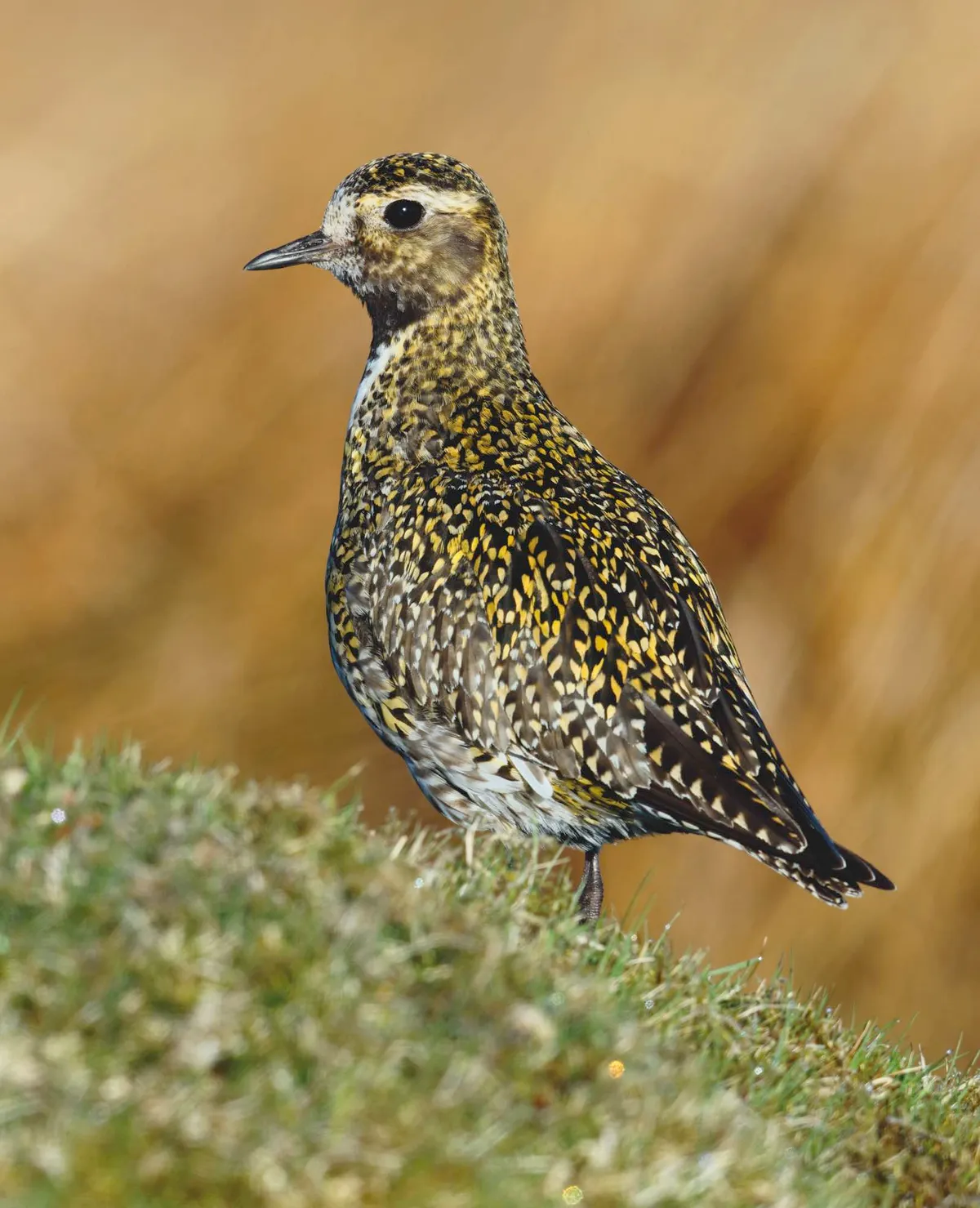
In spring and early summer, northern peat bogs come alive with the plaintive cry of golden plovers. These quicksilver, arrow-winged birds fly fast – so much so, a debate in 1951 about their aerial prowess led Sir Hugh Beaver, of the famous brewing dynasty, to dream up the Guinness Book of Records.
Peatlands are a vital habitat for ‘goldies’ and other wading birds, as well as important carbon sinks. But even now, they are still damaged by peat extraction for sale to gardeners.
Red clover (Trifolium pratense)
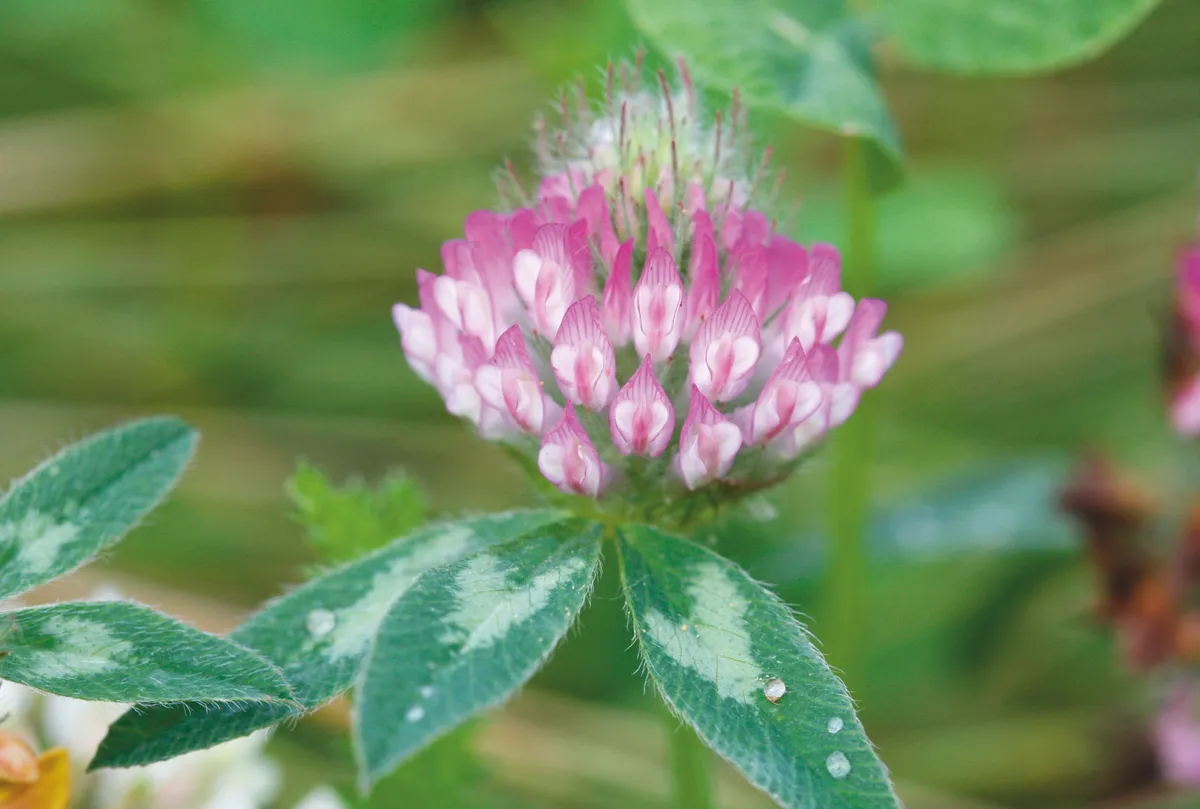
‘Rolling in clover’ certainly applies to bumblebees. They can’t get enough of the nectar-packed pompoms of red and white clover, and there is a simple way to help. Join the ‘no mow’ campaign and leave part of your lawn uncut.
Clover should be quick to appear, often with daisies, buttercups and (from June) selfheal. Yet a measly 30% of participants in Gardenwatch, the UK’s biggest ever garden survey, run by Springwatch, the Open University and BTO, said they allow their lawns to grow long.
Find out more about spring flowers:
Marsh frog (Pelophylax ridibundus)
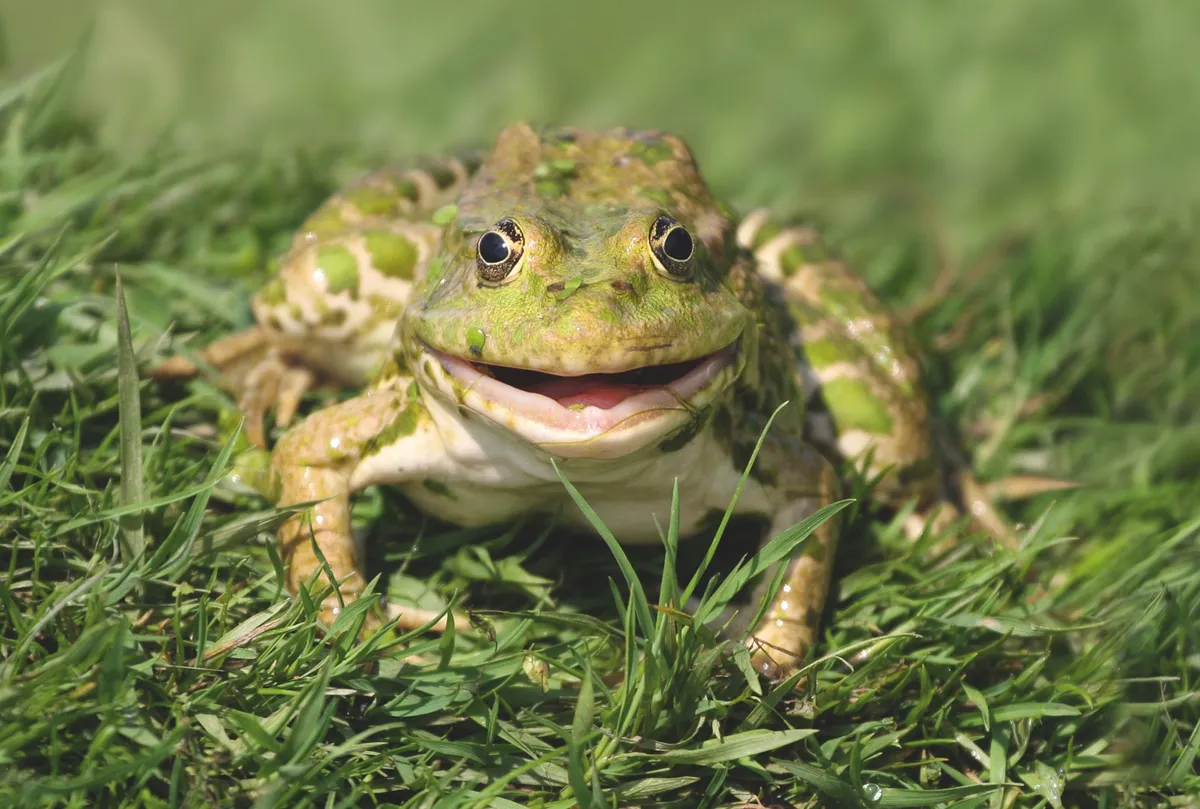
Of all the exotic amphibians to have gained a toehold in Britain, the marsh frog is the most colourful, appearing Kermit-green at times. It’s about half as big again as our common frog, with a voice to match. In April and May, the males keep up an incessant squeaky chorus, inflating their huge vocal sacs.
As with every introduced amphibian, the species’ spread is closely monitored. So far, this handsome alien is restricted to Kent, East Sussex and around London.
Find out more about frogs and toads in the UK:
Main image: European turtle dove drinking at water's edge in Spain. © Education Images/Universal Images Group/Getty
